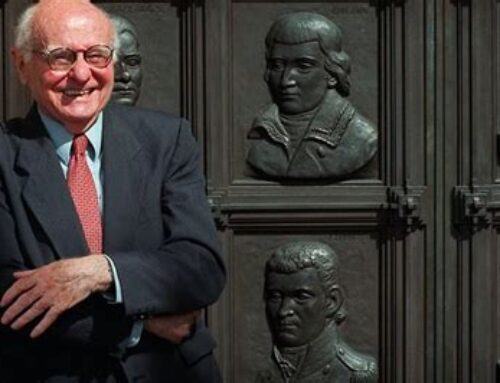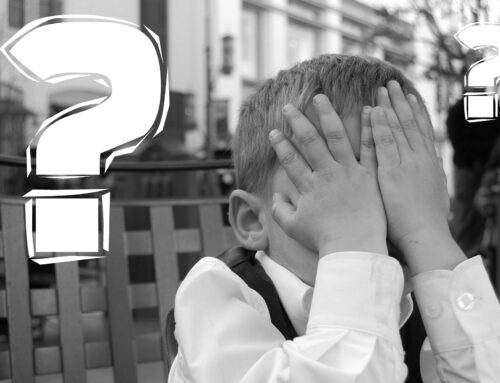Through the quantum-inspired ‘complementary’ method of analysis, we come to see that the paradox of vaccine hesitancy isn’t ‘really’ about vaccines at all.
Complementarity was Niels Bohr’s most significant philosophical contribution. Bohr considered complementarity to be the solution to the ‘problem of knowledge’ his observation of quantum experiments had revealed. In this piece, I test Bohr’s claim by applying complementarity and its principles to the thorny socio-political issue of vaccine hesitancy. In so doing, we find practical, real-world evidence for what James Der Derian terms the ‘quantum heuristic advantage,’ wherein quantum philosophy proves to be faster and more efficient, and offers a higher probability of solving complex problems.
First, let me describe the problem I tackle – vaccine hesitancy. I consider the prevailing vaccine situation something of a ‘political paradox.’ Vaccines are politically paradoxical because one portion of the polis considers them (largely) safe, efficacious, and necessary for our well-being, while another portion of the polis sees them as unsafe, (largely) ineffective, and related to some conspiracy or program of social control imposed by elites. Clearly, something can’t be simultaneously safe and unsafe, effective and ineffective, and, well-intended and malign – hence we observe a paradox. The incommensurability of these two mutually exclusive pictures of our COVID-19 vaccination program has tangible social consequences and must therefore be addressed. France, Greece, Britain, Australia, and the U.S. have experienced widespread anti-vaccination protests where riot police have been compelled to use non-lethal force to repel dissidents.
The ‘Classical’ Approach to Political Paradoxes
Before moving onto the ‘complementary’ method of analysis, let me describe how political paradoxes have traditionally been handled. It is a common political ploy for ‘authorities’ to attempt to ‘collapse’ (i.e., remove or absorb) the contradictory (i.e., dissident) viewpoint. Historically, political paradoxes are resolved when one side of the argument triumphs over the other; when one picture of reality asserts (or reasserts) dominance. Needless to say, the strategy underpinning a regime’s decision to deploy riot police to meet anti-vaccination protestors is clear: the protesters’ picture of reality is unacceptable and must be suppressed.
Now, the logic supporting the classical strategy of suppression and dominance appears self-evident: the mainstream, scientific view of vaccines is correct, and the dissident view of vaccines is wrong. Supported by the ‘Truth,’ it is easy to consider state force justified.
The problem with this approach to political paradoxes is two-fold: (1) the correct view always seems to necessarily correlate with the regime’s view; and, (2) we never bother to discover how the false view came about. With respect to the first issue, if history is any guide, the notion that the regime has a persistent monopoly over the Truth seems unjustified. With respect to the second, writing-off sizeable portions of the population as simply too stupid to see the Truth (and therefore not deserving of intellectual empathy) seems to run contrary to the democratic principles of fairness and tolerance.
At the end of the day, the ‘classical approach’ to political paradoxes just seems a little lazy. It feels much easier to follow a strategy of suppression and dominance – and, in any case, all our institutions have been designed for these purposes. Nevertheless, despite the obvious appeals of propping up the status quo, I want to try something more demanding – I pursue a complementary analysis of a political paradox.
Niels Bohr’s Complementarity
Complementarity is a theoretical framework Bohr developed to explain paradoxical and contradictory observations in the laboratory. Principally, complementarity accounts for how it is that observations of a single phenomenon can produce completely different results, depending on the nature of the experimental set-up used to measure what is taking place at the sub-atomic level. Bohr came to realise that the observer – i.e., the person/s conducting the experiment – determined the kinds of results they would find since the measuring apparatus was directly implicated in the system under investigation. In other words, the observer and the means of inquiry cannot be separated from the outcome of the observation. Additionally, Bohr noted that certain experimental set-ups precluded access to particular kinds of information about a system (e.g., information-B), while another set-up, that granted access to information-B, necessarily precluded access to previously obtainable information (i.e., information-A). In such a way, Bohr theorised that ‘information-A’ had a complementary relationship with ‘information-B,’ based upon the experimental set-up required to determine respective results. This fundamental insight, in turn, led Bohr to conclude that many ‘paradoxes’ in nature were better understood as situations where a ‘complementary’ approach to contradictory results was required to provide a comprehensive description.
Ok, so much for a background in complementarity. Now onto the task at hand: a complementary analysis of vaccine hesitancy.
The Complementary Method of Analysis
(1) According to Bohr’s theory of complementarity, the first thing we need is a paradox comprised of two mutually exclusive pictures reporting on the same phenomenon.
Check!
(2) The second thing we need to understand is that neither of the pictures of the phenomenon accurately describe what is under investigation – i.e., each picture taken by itself is only a partial, and, therefore, necessarily incomplete description of the phenomenon. OK, so the vaccination program is neither safe, efficacious, and necessary for our well-being, nor, unsafe, ineffective, and related to some conspiracy of social control imposed by elites. Hmmm…. that doesn’t to seem to make much sense.
But, wait a moment!
(3) The third thing to understand is that by deconstructing how these two pictures have been produced, we come closer to understanding what is really at stake in the paradox, i.e., what phenomenon is common to both pictures of reality. Right, so the first picture (i.e., vaccines = beneficial) is produced by mainstream media, elites, and regime institutions. And, the second picture (i.e., vaccines = malign) is produced by new media (social media and dissident platforms) and anti-government actors. Fine, so common to both pictures is the issue of authority, with respective actors sitting on opposite sides of state power.
So, what now?
(4) The fourth thing to investigate is the information used to substantiate both pictures. The first picture (i.e., vaccines = beneficial) is substantiated by the scientific evidence selected and advanced by the regime. The second picture (i.e., vaccines = malign) is substantiated by select evidence that the state has a dubious history of social concern and specific instances where the state and corporations have neglected public health and the general welfare.
Aha!
Now we have partially disentangled the paradox. We have some common ground. Both parties to the paradox can agree that science and medical research have generated significant benefits for society (think penicillin, the polio vaccine, and heart transplants), while simultaneously acknowledging that corporations and the state have a dubious record when it comes to public safety (think of the pesticide DDT, asbestos in talcum powder, ‘ice-pick lobotomies,’ and the Tuskegee experiments on African Americans). So, if these are facts upon which both parties can agree, and we no longer have a paradox, what are we left with?
The question of state power.
Through the complementary mode of analysis, we come to see that the paradox of vaccine hesitancy isn’t ‘really’ about vaccines at all. Instead, what is really at stake is whether the regime can be relied upon to institute a program that is in the ‘best interests’ of its citizens. Adherents to the first picture (i.e., vaccines = beneficial) believe the state can be trusted to ‘look after’ the population. Those that hold the second view, however (i.e., vaccines = malign), do not believe the state can be trusted to do the ‘right thing’ by the People.
Complementary Prescriptions
So where does this leave us? What’s the prescription based on the complementary mode of analysis? Herein lies the quantum heuristic advantage. Instead of wrestling over the issue of vaccine efficacy, we must address the problem of ‘institutional trust.’ Before any discussion of vaccines can proceed, we must give the population confidence that the state can be relied upon to act in the citizens’ best interests. We need to give the People reasons to trust the state. This feat can only be accomplished by pursuing the dual tracks of transparency and accountability. Critically, the mainstream media needs to assume its role as the hallowed ‘fourth estate’ – a ‘check on power’ – rather than remain mired in its present orientation as a mouthpiece for power. The media needs to hold elites accountable for their past and present failures and missteps with respect to the COVID-pandemic. But, this means more than simply using COVID-19 as a whacking stick for political opponents (there’s plenty of that happening already). It means questioning the approach to the pandemic, in principle, in a dispassionate and non-partisan manner. Additionally, the media ought to seek out and provide complete transparency about the state of play with respect to vaccine programs. It is quite unhelpful for the media to be caught overstating the efficacy of vaccines, or selectively reporting statistics to bolster the regime’s position. Finally, the media ought to invite elites to make honest addresses about their motivations for a vaccine program, per se. Once and for all, the People ought to hear an honest admission from elites about the precarious state of our healthcare systems, and the economic imperatives that drive a desire for comprehensive vaccination. Persisting to cloak the national interest in the public good is no longer sufficient. Until whole populations, in particular, those most vulnerable to disinformation and under-representation, are treated with the respect they deserve, and the media acts in their interests (rather than the regime’s) it is difficult to see how we become disentangled from our present political paradox.
Unless we prefer to see state force deployed to suppress and dominate voices questioning state power, we ought to consider the complementary mode of analysis and the heuristic advantage it offers.







Leave a Reply